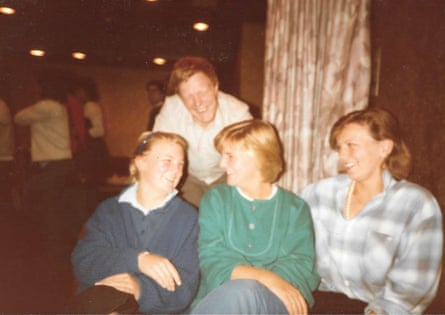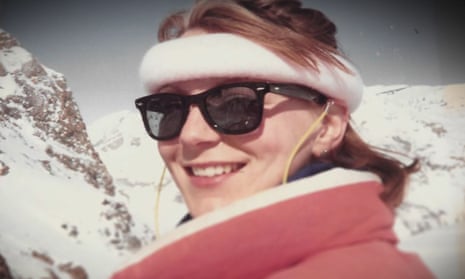In the summer of 1986, London was on the cusp of a boom, with house prices having risen by almost 20% in a year. When Suzy Lamplugh applied for a job as an estate agent, she noted with delight in her diary: “I’m hired on the spot.” In a distressingly prescient later entry, she revealed: “The company puts me in the window desk, as the most attractive female. That’s how it is, the most attractive female on display for any man to see.”
At lunchtime on 28 July, the 25-year-old left her window desk for a 12.45 appointment with a Mr Kipper and was never seen again. The disappearance sparked Britain’s biggest-ever missing person’s inquiry, but detectives were never able to trace her body and failed to gather enough evidence to charge their prime suspect. The Mystery of Suzy Lamplugh, a Sky documentary, unpicks why the murder remains unsolved but it doesn’t fully answer the other mystery: why does Britain remain so obsessed by her disappearance 35 years on?
A few days before Lamplugh went missing, Prince Andrew married Sarah Ferguson. Parts of the Soviet Union were being slowly poisoned by the fallout from Chernobyl. That year, British cows began to show traits of violence and nervousness later attributed to bovine spongiform encephalopathy, or BSE. Listening to the fascinatingly dated, regally clipped diction of Sue Lawley as she describes the police investigation on the news, the era feels curiously familiar and impossibly distant. The documentary evokes an almost forgotten period of wine bars, pearl lipstick and Princess Diana hairstyles. But despite the passing of decades, online amateur detectives remain engrossed by this case to an obsessive degree.

Nick Ross, the journalist and Crimewatch presenter who covered Lamplugh’s disappearance at the time, finds nothing surprising in this. He attributes it to a British taste for this genre of crime: a morbid fascination with watching happy, affluent, privileged lives being destroyed. The story, he says, prompts an instant intake of breath: “‘Oh my gosh! A nice middle-class family.’”
Ross goes on: “It’s the cliches of crime which fascinate. Suzy Lamplugh was attractive, female, young and middle class. It would have been very different if she hadn’t been good-looking or had come from a tenement somewhere, from a disrupted, dysfunctional background. It’s Midsomer Murders. People tend to be more interested in the murders of people from privileged backgrounds than underprivileged ones.”
Ross is refreshingly blunt about the dark appeal of these programmes. “People say they don’t like crime, but our appetites say something quite different. Look at the crime shelves in bookshops, see what Hitchcock’s films are about. Crime is endlessly fascinating.”
Previously unseen pictures from the family’s album of Lamplugh show her skiing, surfing, laughing with her sisters and brother, and dressing up in an off-the-shoulder ball gown. At the time, people were horrified by the speed with which her untroubled background was fractured. This, says Ross, was why the disappearance featured so prominently on such programmes as his. Its daytime element also alarmed viewers. “The greatest cliche of all in crime is ‘broad daylight’, but most crimes happen in broad daylight, because most of us are asleep at night.

“If you’re a broadcaster, you inevitably get drawn into projecting back what your viewers are prepared to tune in for. What interests us in real life is just what interests us in fiction, and the cliches are hugely self-perpetuating. Women are half as likely to be murdered as men, yet will get twice as much publicity. Nobody’s interested in the people most vulnerable to homicide – those under the age of 12 months.”
Jim Dickie, the detective charged with reopening the case in 1999, says it was the idea of a young woman going to work in the morning and never coming home that troubled people. He and the other detectives interviewed for the documentary look exhausted by the failure of their efforts to secure a conviction, after decades spent trying. But he is valiantly trying to stay positive about the chance that broadcasting these new photographs and witness accounts may encourage more people to come forward with evidence that finally allows them to resolve the case.
“Something might jog someone’s memory,” he says. “There may still be someone out there who hasn’t come to the police before, or whose evidence has been ignored. The family deserve closure.” The investigative failings were partly due to policing systems. “We were in an analogue age,” says Dickie. “Everything was on paper. There were old-fashioned card index systems for evidence-gathering. Now we have all sorts of technology, computer systems, number plate recognition, CCTV. I think we could probably have solved the case a lot quicker now.”
Lamplugh’s younger brother Richard also looks crushed by the weight of what happened to his family, but appears to be forcing himself to revisit it in an effort to pay tribute to his sister and to voice the family’s frustration that police were never able to charge the main suspect, John Cannan, who has denied involvement and who remains in prison for the murder of another young woman. Richard says the family is “back into thinking, ‘Well, maybe we could have a finish, you know, an end.’ We’d love an end.”

There is an optimistic end of sorts – in the creation of the Suzy Lamplugh Trust by her parents. Instead of privately grieving, her mother Diana channelled her energies into campaigning. Her impact on anti-stalking and anti-harassment legislation, as well as the licensing of minicabs, has been considerable.
She appears several times in the film, dressed cheerfully, sometimes wearing a pink beret, calmly addressing the media. The documentary includes footage of Sue Lawley asking her: “Some people say that you have courted publicity, that you have enjoyed the limelight.” But Diana found campaigning to draw attention to her daughter’s disappearance the only logical response to trauma. “If I had a long face and was dressed in black, I wouldn’t get my message across. It certainly wouldn’t bring Suzy back either.”
Diana died in 2011, but the charity continues to do positive work – and the family’s dignity in the face of ghoulish interest in their difficulties shines through. “The trauma that the family has doesn’t bear thinking about,” says Suky Bhaker, CEO of the trust. “Suzy was a colleague, she was a friend, she was a daughter, she was a sister. She was just going about her normal day and I think that’s what struck a chord with so many people. What Diana did just amazingly was turn this tragedy into something that’s had such a positive impact on so many individuals’ lives. That’s a real testament to the family’s vision.”
The Mystery of Suzy Lamplugh is on Sky Crime, 14 March at 9pm.
